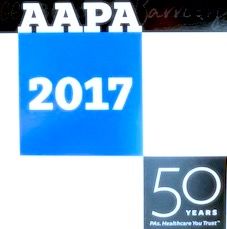Article
PAs Hear Review of New CDC Influenza Recommendations at AAPA 2017
Author(s):
CDC's Advisory Committee on Immunization Practices (ACIP) are published for the current US influenza season.

In an informative session by Lisa Grohskopf, MD, MPH, a medical officer with the Centers for Disease Control and Prevention (CDC), physician assistants heard the findings that led to the agency’s new recommendations for the 2016-2017 influenza season, and what might be expected when the 2017-2018 guidelines are released in August.
As Grohskopf explained in the CME session at the American Academy of Physician Assistants (AAPA) 2017 Conference, the recommendations of the CDC’s Advisory Committee on Immunization Practices (ACIP) are published for the current US influenza season. These recommendations are designed to prevent and control seasonal influenza with vaccines.
The annual document includes information on the available vaccine formulations, their contraindications and precautions, and other considerations broken down by population group, such as infants and children, the elderly, immunocompromised individuals, women who are or will become pregnant during the flu season, nursing home residents, American Indians and Alaska Natives, and extremely obese individuals (body mass index >40).
Another group of individuals needing special consideration are those with chronic pulmonary, cardiovascular, renal, hepatic, neurologic, hematologic, or metabolic disorders. This includes patients with disorders such as asthma and diabetes, but it does exclude isolated hypertension.
Grohskopf also reviewed changes from previous recommendations. The revisions from the 2016-2017 influenza season include modification of the egg allergy precaution and a recommendation that live attenuated influenza vaccine (LAIV4) not be used. LAIV is also known as the nasal spray flu vaccine.
She explained that one common feature of all the current vaccines in that they are all designed to elicit an immune response to hemagglutinin (HA). Neuraminadase is target of currently licensed influenza treatments, such as oseltamivir phosphate (Tamiflu/Genentech) and zanamivir (Relenza/GlaxoSmithKline).
Influenza viruses are named based on these 2 proteins; for example, the 2 main subtypes of influenza A viruses, H1N1 and H3N2. However, antibodies against 1 type of subtype of virus is not as effective—or it may not be effective at all—against the other subtypes.
Grohskopf also explained the 3 categories of influenza vaccines: inactivated (IIV), recombinant (RIV), and live attenuated (LAIV).
As its name suggests, IIVs contain inactivated virus, either split of subunit. Many brands of this vaccine are available, and some are approved for infants as young as 6 months of age.
RIVs contain recombinant HA and are egg-free, an important consideration for those with known or suspected egg allergy.
The last category, LAIV, has not been recommended for use during the 2016-2017 influenza season.
As far as the ACIP and CDC are concerned, Grohskopf said, there is no express preference for any one type of influenza vaccine over another, especially in cases where more than one is appropriate and available. In some instances, she explained, more than one vaccine might be appropriate for any given individual based on their population risk group and individual health history. But, in any case, vaccination against influenza should not be delayed in order to obtain a specific product, especially if the individual does fall into a high-risk group and needs to be protected as soon as feasible.



